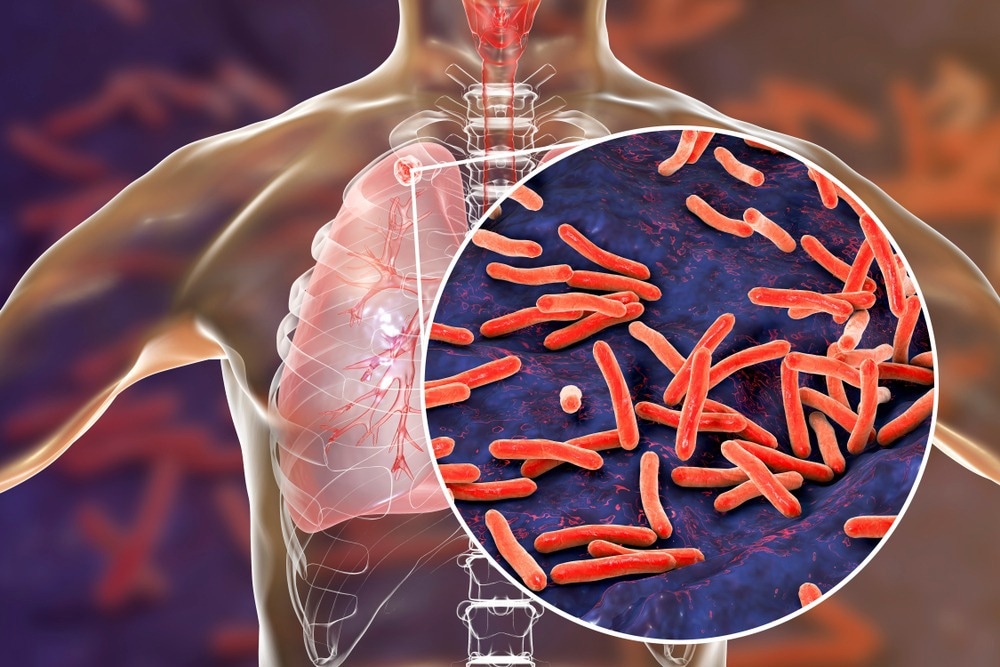A new study has uncovered the role of B and T cells in controlling tuberculosis (TB) infections. The research could prove valuable in future vaccine development.

Image Credit: Kateryna Kon/Shutterstock.com
Natural resistance to TB
An estimated 13 million people in the US are infected with TB, according to National Health and Nutrition Examination Survey (NHANES). However, there were only 7,860 reported cases of the disease in 2021. This is because those 13 million have latent TB, where the infection remains inactive and does not cause symptoms. Those with latent TB do not have the disease. By studying those people who can tolerate infection with TB, scientists can hope to understand how to develop more effective treatments and vaccines to help the 10 million who become sick with the disease around the globe each year, leading to 1.5 million deaths.
What role do B cells play in TB?
Granulomas are the hallmark of TB. These clusters of disease-containing immune cells contain B cells, specialized immune cells in granulomas, that have long been assumed to directly control TB infection. B cells within granulomas are the focus of new research published in Nature Immunology. Led by scientists at the University of Chicago and Washington University, St Louis, the study used animal models to explore which functions of B cells were fundamental to the pathogenesis of TB. However, the team was unable to find a single cell function that directly influenced the disease.
Senior author of the study Shabaana Khader, PhD, said, “no matter what we knocked out individually in B cells, it didn’t make any difference. All the predicted functions that people think B cells are doing were not what they were doing in the lung for protection against TB.” Despite these findings, the team knew B cells were essential because the mice began to fall ill with TB when they knocked out TB-specific B cells. The team replicated their research with non-human primates and found the same results.
B and T cells working hand-in-hand
Granulomas are home to another type of immune cell, a specific type of T cell known as “helper T cells (or CD4+) are also present in granulomas. Prior to this study, it was understood that B and T cells interact to control TB progression; however, the exact nature of that interaction was unclear until now.
While narrowing down potential B cell functions, the team witnessed that the helper T cells expressed transcription factors that produce subtypes of T cells that localize within the granulomas. These subtype cells control the TB infection by activating the macrophages to kill the infected cells, guided by the B cells to ensure they kill the right cells.
Promise for future TB vaccines
Only one vaccine is currently approved for TB, which was developed in 1922. Although it is useful in preventing childhood TB, its efficacy in protecting adults varies. The current study has uncovered valuable insights into how some people are naturally able to control TB infections, and this information could be leveraged to develop more effective vaccines.
“if you can initiate the protective response much earlier, the bacteria will never get a chance to establish an infection in the lung. We could make a vaccine that generates the right kind of immune response so that when you get exposed to the bacteria, you won’t even carry the latent infection. So our resolution for vaccine design is much cleaner now since we know what cell types to target in the lung.”
Khader
There is a promise that future studies could help develop a novel vaccine that could protect more people from TB, which impacts millions each year.
Sources:
- Antigen-specific B cells direct T follicular- like helper cells into lymphoid follicles to mediate Mycobacterium tuberculosis control. DOI: 10.1038/s41590-023-01476-3
- Filardo, T.D. et al. (2022) “Tuberculosis — United States, 2021,” MMWR. Morbidity and Mortality Weekly Report, 71(12), pp. 441–446. Available at: https://doi.org/10.15585/mmwr.mm7112a1.
- Latent TB Infection in the United States – Published Estimates [online]. Centers for Disease Control and Prevention. Available at: https://www.cdc.gov/tb/statistics/ltbi.htm (Accessed March 2023)